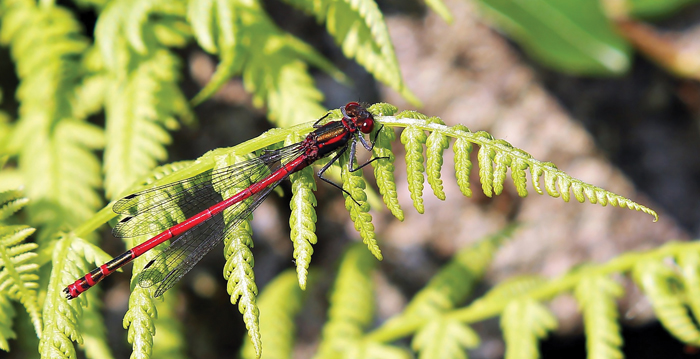Life itself is said to have begun in water, so it’s not surprising that we are drawn to it. Water in a garden instantly changes the ambience of the space. It reflects light and creates its own microclimate whilst adding interest and attracting a range of plants and wildlife. Even the smallest of ponds can support frogs, newts, insects, damselflies, dragonflies, water snails and visitors such as birds, toads and even snakes.
Ponds with different features will prove to be more attractive to a greater variety of wildlife than a formally shaped pond with little vegetation and steep sides. Sloping ‘beaches’ will enable creatures to climb in and out easily, and to take a drink without fear of drowning. Ideally there will be muddy areas and shallow spaces together with deeper sections and a range of different plants for egg-laying, shelter, feeding and mobility assistance. There will be shade and sun, with crevices in which creatures can hide and some open areas for maximum benefit of light and warmth.
It has been found that water in a garden can help people to feel happier and healthier. If there is sound, such as a tinkling stream or fountain, this can have a meditative effect that provides a soothing therapy. The gentle movement of water is calming, whereas sudden sounds can create what’s known as an ‘evolutionary response’, which is more likely to prepare the body for action – the ‘fight or flight’ reflex.
A few minutes looking into a pond and noticing life within helps to slow the pace of life and calm the soul. Tending to a pond is equally beneficial. It requires gentle care on a little-and-often basis, remembering always to leave extracted debris near the side so that creatures are able to crawl back into the water. Try to ensure that just one thing doesn’t dominate your water garden. This is especially important where there are overhanging trees, as leaves can soon fill up the pond and create a toxic, rotting environment where oxygen is in short supply.
 What about fish?
What about fish?
A pond containing fish is different from a wildlife pond. Each has its own merits. Watching fish is undoubtedly a pleasant activity and caring for them is relatively easy. Fish can be viewed as being attractive, especially when coloured gold. However, they prey on smaller wildlife, which can reduce the diversity of life. At the same time, they increase the level of nutrients in the water, which isn’t the best for plants and other pond life.
A pond garden
Ponds provide a great gardening opportunity! The surrounding area can be colonised with suitable plants, some of which enjoy boggy conditions such as those found within the pond margins, whilst others like to have their feet completely under the water. The most successful pond will have around one-third to a half of the surface covered in leaf by the summer months. This will help to control troublesome invasive plants that have a habit of moving in. These include blanket weed, which is a type of algae that can quickly dominate everything else, and duck weed, which can cover the entire surface of the water very quickly.
Water lilies are some of the most popular pond plants, but don’t make the mistake of choosing the wrong one. Some like to be planted in a basket on the bottom of a pond, whilst others prefer shallow water. Some water lilies will colonise very quickly whilst others are far more suitable for small ponds.
Pond plants can be divided into four main categories: marginals, which include marsh marigolds and water irises; deep water aquatics, including water lilies and flowering rush; floating plants such as water lettuce and water soldier, which often require replacing after winter frost; and oxygenators often known as ‘pond weed’. They are able to take up food through their foliage as well as roots and they provide oxygen within the pond. These include hornwort and spiked water milfoil.
By Caroline Knight


